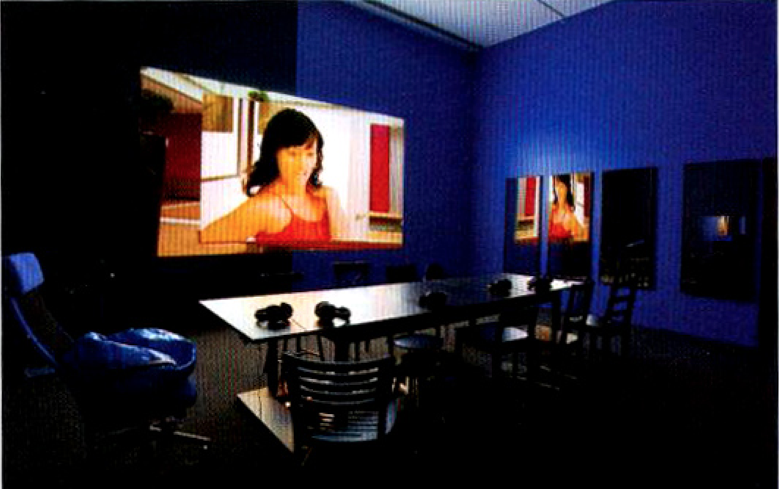
- Source: ARTFORUM
- Author: Christopher Bedford
- Date: NOVEMBER 2010
- Format: PRINT
Ryan Trecartin: MoCA Pacific Design Center
The agitated camera work, gaudy palette, complete disavowal of intelligible narrative, emphasis on slippery models of beauty, desire, gender, and sexuality, and strategic use of lo-fi graphics evident in the seven videos on view in Ryan Trecartin’s recent solo exhibition “Any Ever” are by now standard fare for the artist. But where previous viewing “environments”—for instance, Sibling Topics (Section A), 2009, seen at New York’s New Museum—recall the work of predecessors such as Mike Kelley and Paul McCarthy in their emphasis on materiality, the installations in this show are far sparer and altogether more disquieting, hinting at a sharpening of Trecartin’s concerns, and thus creating critical distance between the artist and his most obvious forebears.
Taken as a whole, the constellation on view at MOCA Pacific Design Center resembled nothing more than the vacant, affectless exterior and interior spaces of a house in a new middle-class subdivision, owned—or rented—by a recently postcollegiate professional: furnished quickly and only partially, perhaps on credit; rooms littered with incongruous groupings of objects purchased on a whim and always branded, tossed aside, and forgotten without a hint of wear—consumption compounded. The atmosphere of premeditated transience was established by scattershot assemblies of beds, tables, couches, exercise equipment, backpacks, handcuffs, heating lamps, and so on. Given the most basic, skeletal form, each room or set was so thin and brittle, it felt almost immaterial or, more apt, virtual, like the sociality of a chat room or a Twitter feed.
If Trecartin’s environments felt like quickly assembled staging grounds for ad hoc performances, the videos they housed only animated and amplified that sense. The total installation—two floors, seven videos, five environments—was conceived as two corresponding halves and organized around a set of ambiguous allegorical concerns. Trecartin’s actors dominate his videos, often facing the camera directly, chirping endlessly in voices synthesized into shrill digital tones. Every utterance is abbreviated as though a meaningless epithet carefully crafted to linger and impress for a moment, but no more, spoken with the understanding that someone is watching and listening: “I want to donate it to the fourth world. . . . Detroit probably needs it.” “I am such an enigma.” “Can I get a democracy sample?” “My body is a community.” “The only person I hate more than myself is you, and you should take that as a major compliment.” Content is secondary to style here, and style is dictated by a prevailing need for speed and brevity; each statement could be a text or a Facebook post, a hectic stream that is only made more disorienting by the erratic camera work, the rapid-fire cutting from one “scene” to the next, and the occasional interruption by oversize text that recalls cover art for cheap bootleg mix CDs.
Trecartin’s work derives its appeal from the artist’s obviously intimate understanding of (and relentless desire to describe) the social networks that connect us in relation to the digital devices that have become extensions of our bodies, as well as the shared aesthetics these interrelated experiences have ushered into our collective consciousness. The artist’s characters become themselves in anticipation of being seen, only to dissolve before becoming recognizable. In fact, Trecartin rarely lingers long enough on an image of anything—subject or object—for that entity to be consumed, let alone identified. This ability to convincingly channel, process, reconstitute, and critique social media, in all its optic, haptic, and social dimensions, is Trecartin’s ongoing undertaking. In his video installations he has developed a synthesizing mechanism that finds its form in and around the still-emerging social aesthetics of the digital era, and this system acts as a powerful vacuum for both content and form, throwing the conditions of this most communal, heterogeneous, and democratic of social spaces into high critical relief.


